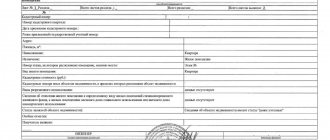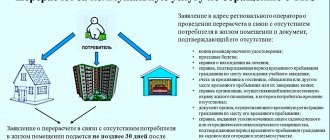After the entry into force of the Criminal Code of the Russian Federation in its original version, the article for cruelty to animals existed until December 20, 2021. After December 20, it was criminalized - the punishment was toughened, the disposition was changed, thereby the subjective side was expanded, new qualifying features were added, and the objective side was changed.
Dear readers! The article talks about typical ways to resolve legal issues, but each case is individual. If you want to find out how to solve your particular problem , contact a consultant:
+7 (499) 938-81-90 (Moscow)
+7 (812) 467-32-77 (Saint Petersburg)
8 (800) 301-79-36 (Regions)
APPLICATIONS AND CALLS ARE ACCEPTED 24/7 and 7 days a week.
It's fast and FREE !
A bill to tighten the measures of Article 245 of the Criminal Code of the Russian Federation was proposed back in 2015 in connection with the large increase in poisoning of animals by people: for example, thousands of dogs were poisoned in St. Petersburg alone.
Also, the previous edition was rarely applicable due to the difficulty of provability and the disposition itself, which provided for punishment only for causing death or injury to an animal. In the first half of 2015, about 50 people were convicted.
The reason for the new editorial office is also the criminogenic factor, that is, those around them who observed what was happening. The criminal himself, committing abuse of animals and at the same time remaining unpunished for crimes, deforms the personality (changes it), which in the future can lead to an increase in violent crime.
Statistics in Russia
According to statistics, this crime is the most latent (about 10 percent are registered).
The reason for this may be objective and subjective reasons:
- Objective reasons include the fact that the state does not have the means or ability to control this type of offense (there is no way to detect it).
- Subjective reasons include the difficult provability of this criminal act, so officials resort to not initiating or registering such offenses. Another reason emerges from the court – these are statistical indicators. By not registering crimes, law enforcement agencies thereby increase detection rates.
Absolute indicators of registered crimes for flaying.
| Year | Number of crimes under Art. 245 of the Criminal Code of the Russian Federation |
| 1997 | 73 |
| 1998 | 181 |
| 1999 | 196 |
| 2000 | 136 |
| 2001 | 183 |
| 2002 | 122 |
| 2003 | 139 |
| 2004 | 552 |
| 2006 | 578 |
| 2007 | 417 |
| 2008 | 389 |
| 2009 | 359 |
| 2010 | 307 |
| 2011 | 247 |
| 2012 for six months | 135 |
In 2021, 82 people were prosecuted for animal cruelty, of whom only one received a real sentence.
Relative indicators depending on age are as follows:
| Age | Percent |
| 14-17 | 40 |
| 18-24 | 15 |
| 25-30 | 30 |
| 30-40 | 15 |
Most of these crimes are committed by men.
Punishment for cruelty to animals
The level of responsibility depends on the circumstances and the offender.
Administrative punishment for cruelty to animals
Those who cause physical pain to an animal are brought to administrative responsibility (the article was recently revised, as a result of which it is no longer necessary to bring only those who physically injured or killed the animal), or if they left the pet without proper care. Those who used animals to satisfy their sexual needs will also be attracted. As a result, there is a fairly large fine.
If the attitude does not change and repeated cases become known, then arrest for 15 days is possible.
Criminal liability for flaying
Criminal liability has also become tougher. Now people who cruelly treat animals can be imprisoned for five years.
Article 245 of the Criminal Code of the Russian Federation on cruelty to animals consists of two parts:
- Beating, torture and torment of an animal, committed for selfish reasons or sadism, is punishable:
- a fine of up to 80,000 rubles;
- a fine equal to half a year’s salary or other income;
- 360-hour compulsory work;
- annual correctional labor;
- restriction of freedom for a year;
- six-month arrest;
- imprisonment for up to three years.
- The same actions, but taking into account the fact that they were committed by an organized group of people / by agreement / in the presence of children under 14 years of age / for sadistic reasons / with public demonstration (for example, with the subsequent publication of photos or video material on the Internet) / in relation to to several animals is punished:
- a fine from 100,000 to 300,000 rubles;
- a fine equal to a year or two’s salary;
- two-year correctional labor;
- five years of forced labor;
- imprisonment (from three to five years).
Some comments to Article 245 of the Criminal Code of the Russian Federation:
- Anyone under 16 years of age can be held criminally liable under this article. That is, in the event of cruelty to animals by minors under this age, the parents will be responsible for them.
- By “animals” we mean both wild and domestic (cat, dog, even a hamster), as well as birds.
- Intentional collisions with animals by vehicles also fall under this article.
- Sadistic methods are when a person deliberately harms an animal for the purpose of obtaining pleasure, for example, cutting off limbs, skinning, and so on. Such actions lead to prolonged and particularly severe pain.
The Animal Welfare Act comes as research has shown that there is a link between human killing (especially brutal killing) and cruelty to animals. The main object of encroachment is morality.
Normative base
The type of offense in question is enshrined only in the Criminal Code of the Russian Federation, namely in Article 245 of the Criminal Code of the Russian Federation.
There are similar types of administrative offenses established in some constituent entities of Russia.
The Code of Administrative Offenses of some constituent entities of Russia and regional laws contain the following offenses:
- rules for keeping animals;
- transportation rules;
- procedure for conducting events with animals;
- cruelty to animals and others.
Law of Moscow dated November 21, 2007 N 45
Regional Law of the Leningrad Region dated June 18, 2015 N 61-oz
Animal Cruelty in 2021
It was noted above that at the end of 2021, Article 245 of the Criminal Code of the Russian Federation was expanded and tightened, and new qualifying criteria appeared.
In this regard, the composition of the crime has changed: the subjective side has been expanded, the objective side of the crime has been slightly changed.
Corpus delicti
The components of any offense are: object, subject, objective and subjective side.
Let's look at each element separately.
Object of crime
This is public morality, the relationship that develops between man and the animal world, since man is a combination of biological and social properties. It is biological properties that unite people with animals, since humans and animals are part of living nature. The second property is distinctive - a person lives and develops in society, has consciousness.
Due to the fact that people and animals have biological properties in common, the state needs to regulate the relationship of people to animals (on the contrary, this is not possible), preventing actions aimed at causing pain and suffering to representatives of other species of living nature.
You will find a lot of information about types of fraud on the Internet on our website. Where to go to get the beatings removed? Find out here.
Subject of the offense
These are animals, but not all of them! The animals that the state protects include higher vertebrates - mammals and birds, and it does not matter whose property they are or whether they are even wild.
This means that fish, insects, and invertebrates are not the subject of the crime.
Subjects
These include a 16-year-old person and older persons.
Objective side
Consists of two alternative actions:
- resulting in the death of an animal;
- led to his injury.
This means that the animal was damaged in such a way that its anatomical properties were damaged (deprivation of limbs, removal of eyes).
A crime can be expressed in both actions and inactions:
- Actions can be: organizing fights between animals or beating them, bullying them.
- Inaction is expressed in indifference to the animal, that is, deprivation of food, water, and failure to provide assistance.
Subjective side
Expressed in direct and indirect intent.
This also includes the motive for which the offense was committed - selfish or hooligan motives:
- Selfish motives manifest themselves in making a profit (organizing fights and receiving material benefits from this), or, on the contrary, getting rid of costs (very rare, but implies killing an animal as an “economic cost”).
- Hooligan motives are the manifestation by a criminal of disdain for animals by demonstrating his actions to others, ignoring public norms of morality and morality.
After the adoption of the new version of Art. 245 of the Criminal Code, another category of the subjective side has appeared - this is the purpose for which the crime is committed.
Thus, cruel treatment in order to cause an animal to suffer or suffer pain is now also criminally punishable, thereby the legislator has expanded the subjective side.
Where to go?
If children or adults abuse their own or other people’s pets or wild animals, it is necessary to show their active citizenship and report this to law enforcement agencies.
To do this, you need to come to the nearest internal affairs department (police), report the incident to the duty officer and write a statement.
After ten days, a reasoned response to the application must be received (refusal or initiation of a criminal case).
If the answer is negative, you can appeal it to the chief of police, the prosecutor or in court.
By showing civic activity, a person helps the state fight crime.
After all, human rights activists cannot keep track of everyone, and for such a crime as flaying, which is revealed and proven very difficult, it will be almost impossible to do this.
How to write an application?
The Criminal Procedure Code makes it possible to submit an application both orally and in writing:
- In the first case, the police officer will draw up a report and give it to the applicant against signature.
- In the second case, you can write the application yourself at home or at the branch of the authorized body.
When drawing up an application at home, you must adhere to some mandatory registration rules:
- The application is drawn up in the name of the first head of the police department, indicating his full name, position, and rank.
- Next comes the water part, where the applicant’s details are indicated (full name, year of birth, place of residence, telephone number).
- The descriptive part describes in detail the circumstances of the incident: what was seen, and what actions were defined as criminal (beating, abuse of a dog, a neighbor does not feed his pet). The time and place of the offense are indicated.
- The final part is the operative part, where the requirements are indicated (to stop the crime, to find the criminal).
It will be easier to draw up a statement at law enforcement agencies; they will provide you with a sample statement and help you express your thoughts correctly and consistently.
How to prove a fact?
Cruelty to animals can be proven using the following evidence:
- witness's testimonies;
- videos or photos indicating cruelty to animals;
- forensic medical examination to determine the degree of harm caused to the animal.
Responsibility and punishment
There is administrative (at the regional level) and criminal liability (at the federal level) for flaying. They differ in the degree of harm caused to the animal and the size of the maximum punishment.
Any subject of the Russian Federation has the right to establish administrative liability for cruelty to animals. There is no such rule at the federal level, although there were attempts to introduce it in 2015.
Administrative (fines)
In different regions, sanctions for this type of offense are slightly different in size.
Thus, administrative sanctions are provided in Moscow, St. Petersburg, the Republic of Buryatia, and the Altai Territory.
The sanctions are shown in the table below:
| The subject of the Russian Federation | Amount of punishment in rubles |
| Moscow | On f.l. – up to 2500, per d.l. – 4000-5000, on y.l. – 15000-20000. |
| Saint Petersburg | On f.l. – up to 5000, per d.l. – 15000-20000, on y.l. – 50-100 thousand. |
| The Republic of Buryatia | On f.l. – 1000-2000, per d.l. – 2000-4000, per y.l. – 5000-10000. |
| Altai region | On f.l. – 500-1500, per d.l. – 3000-5000, on y.l. – 5000-10000. |
*F.l. – individuals, d.l. – officials, legal entity – legal entities.
Criminal under Article 245 of the Criminal Code of the Russian Federation
According to Part 1 of Art. 245 of the Criminal Code of the Russian Federation, a person who has committed an unlawful act may be punished from a fine to a real term of imprisonment:
- Fine – up to 80,000 rubles.
- Income from wages or other source for a period of 6 months.
- Mandatory work – 360 hours.
- Correctional labor – up to 1 year.
- Restriction of freedom – up to 1 year.
- Arrest – up to 6 months.
- Imprisonment – up to 3 years.
For qualified personnel under Part 2 of Art. 245 of the Criminal Code of the Russian Federation the punishment is as follows:
- Fine – 100-300 thousand rubles.
- Income from wages or other source for a period of 1 to 2 years.
- Forced labor – up to 5 years.
- Imprisonment – 3-5 years.
Find out the age of criminal responsibility in our article. Read about the specifics of compensation for damages by the culprit of an accident here.
What is the penalty for attempted murder of two or more persons? Details are here.
Regarding minors
Children over the age of 16, as a general rule, are subjects of a criminal offense, which means they are independently responsible for the unlawful acts committed.
But minors cannot bear the same responsibility as adult criminals; child criminals are even kept separately; educational colonies have been specially created for them.
How much do they give to minors for a similar crime?
According to the main composition:
- Fine – 1000-50000 rubles.
- Amount from source of income – from 2 weeks to 6 months.
- Mandatory work – 40-160 hours.
- Correctional labor – up to 1 year.
- Restriction of freedom – up to 2 months.
According to the qualifying criteria, the minor faces a punishment of imprisonment from 3 to 5 years, the remaining sanctions are within the limits of those listed above.
Children from 16 to 17 years of age are not subject to arrest or forced labor; according to the basic rules, imprisonment cannot be imposed.
Criminal liability for cruelty to animals
Let me remind you that cruel treatment of an animal for the purpose of causing it pain and (or) suffering, as well as for hooligan or mercenary motives, resulting in its death or injury, is subject to criminal liability under Art. 245 of the Criminal Code of the Russian Federation.
This administrative offense is punishable by a fine in the amount of up to 80 thousand rubles or in the amount of wages or other income of the convicted person for a period of up to six months, or by compulsory labor for a period of up to three hundred and sixty hours, or by corrective labor for a period of up to one year, or by restriction of freedom for for a term of up to one year, or arrest for a term of up to six months, or imprisonment for a term of up to three years.
Part two of the article provides for liability for a qualified crime committed by a group of persons in the presence of a minor; using sadistic methods; with public demonstration, including in the media or information and telecommunication networks (including the Internet)
Such acts are punishable by a fine in the amount of 100 to 300 thousand rubles, or correctional labor for a term of up to 2 years, or forced labor for a term of up to 5 years, or imprisonment for a term of 3 to 5 years.
Arbitrage practice
It was noted above that this crime is predominantly committed by men, and therefore the practice is mainly against them.
Examples:
- The man threw a noose around the dog and dragged it for an hour and a half; realizing that the dog was not dying, he decided to hang it. For a long time, the dog could not escape and made sounds indicating that it was being hurt (whining, wheezing). The dog's death was due to compression of the neck during hanging. The man confessed to his crime. The court sentenced him to restriction of freedom for a period of 4 months.
- A man in a state of alcoholic intoxication, out of hooligan motives, using an insignificant reason (the barking of a dog), approached her and hit her several times with a hard object, as a result of which the hind limb was broken, which subsequently led to its amputation. Next, the man began to strangle the pet with an iron chain, causing her painful suffering (the dog whined and moaned). The man did not admit guilt in court. The court imposed a sentence of correctional labor for a period of 5 years.
Judicial practice has not yet emerged since the introduction of the new animal cruelty law, but it is understood that it will reduce crimes against animals in the future.
Conclusion
Prevention of cruelty to animals is necessary for society. There are many cases, and their number is growing every year, as can be seen from the statistics for 2000 - 2007. Further, the statistics decreased slightly, but there are still many cases; the statistics show only registered cases, which account for approximately 10% of the total number of acts committed.
From practice it is clear that the court is quite loyal to criminals, and punishment in the form of imprisonment is imposed extremely rarely.
Cruelty to animals: administrative responsibility
For example, for cruelty to an animal, a citizen may face a fine of 5 thousand rubles. up to 15 thousand rubles..
However, the Responsible Animal Care Act defines cruelty as:
- cases where the owner refuses to keep a pet if this causes harm to the latter’s health;
- failure by the owner to provide assistance to an animal in a life-threatening or health-threatening condition;
- torturing an animal, including by hunger, thirst or beating.










